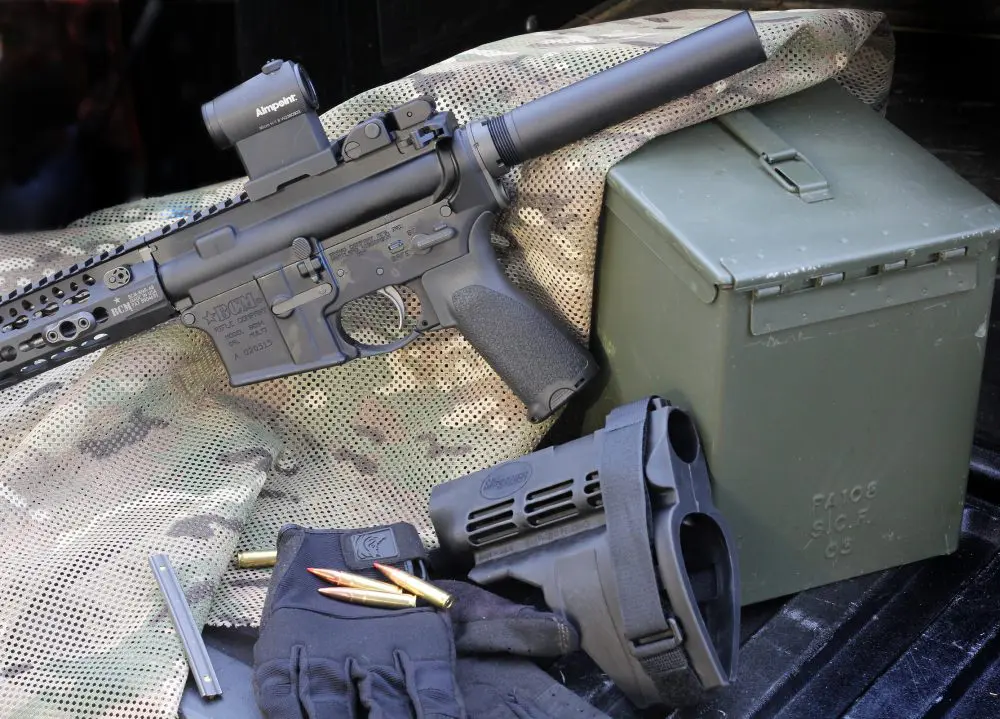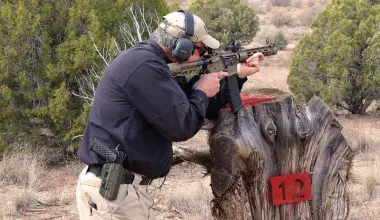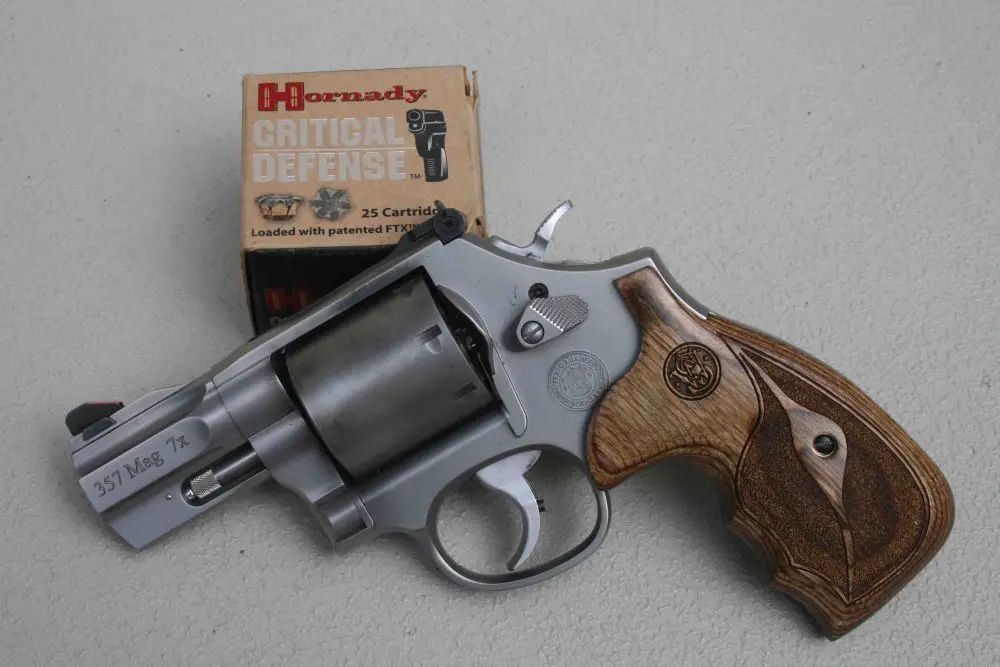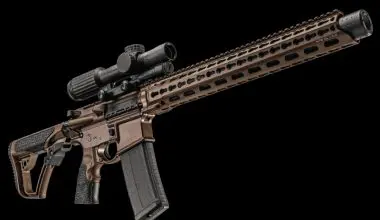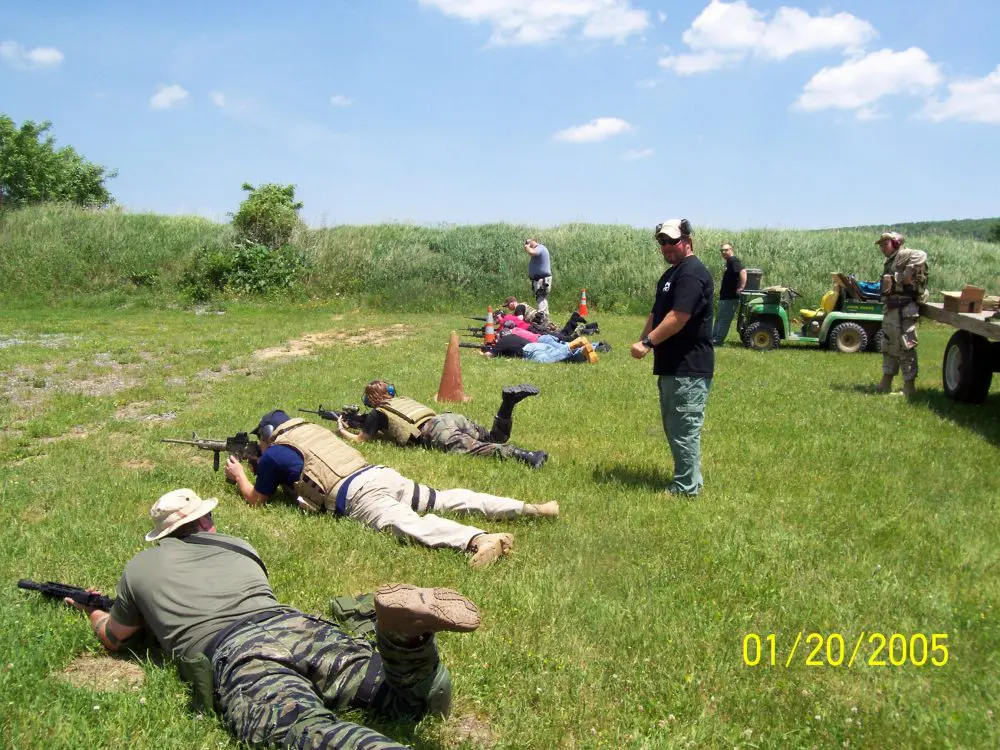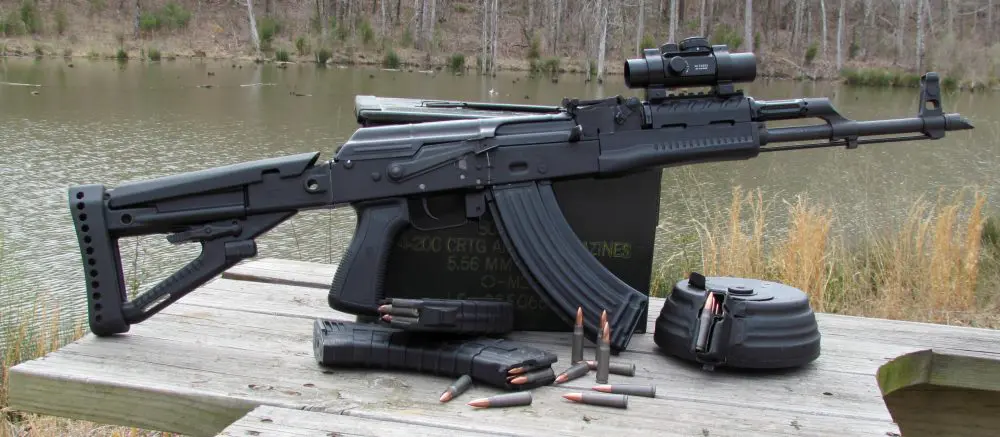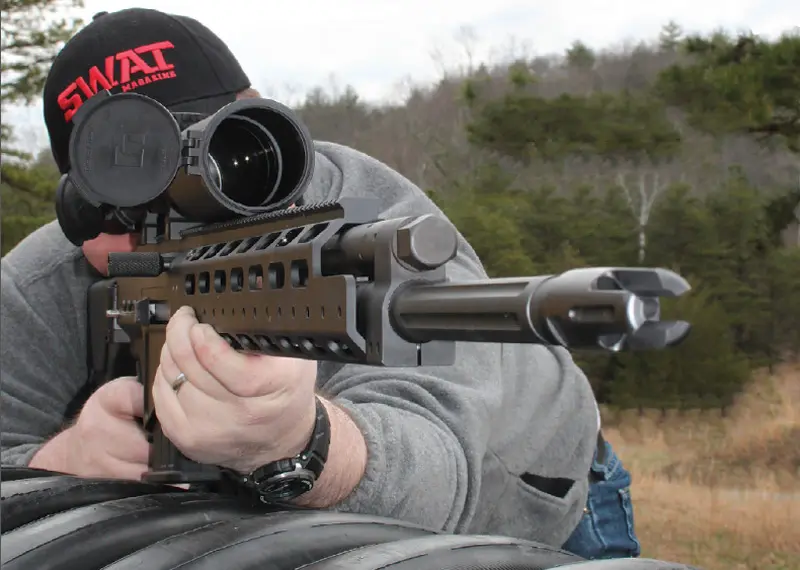
What comes to mind if someone says they want a specialized long-range (1,000 yards plus) precision rifle for law enforcement or military applications?
No offense intended to the .308 Win, but 1,000 yards and beyond is a realm best served by cartridges with more powder capacity pushing heavy-grain, high-ballistic coefficient bullets downrange. A decision needs to be made if this rifle is for materiel or personnel interdiction.
If personnel are the primary mission, the massive .50 BMG can be dismissed. The benefit of calibers other than .50 BMG is immediate, as rifles become more portable in terms of size and weight for both weapon and ammunition.
Two prime cartridge considerations are the .300 Win Mag and .338 Lapua Magnum. Up to this point, mention of these cartridges would confirm that the rifle will be bolt-action. This no longer holds true, thanks to Alexander Arms and their Ulfberht semiautomatic .338 Lapua Magnum.
Table of Contents
.338 HISTORY
Initial .338 Lapua Magnum (.338 Lapua) development can be traced to 1983 with Research Armament Industries (RAI) in the United States. After preliminary experiments, a .416 Rigby case necked down to take a 0.338-inch bullet was selected, since this diameter presents an optimum of sectional density, ballistic coefficient, and penetrating capability for rifle bullets.
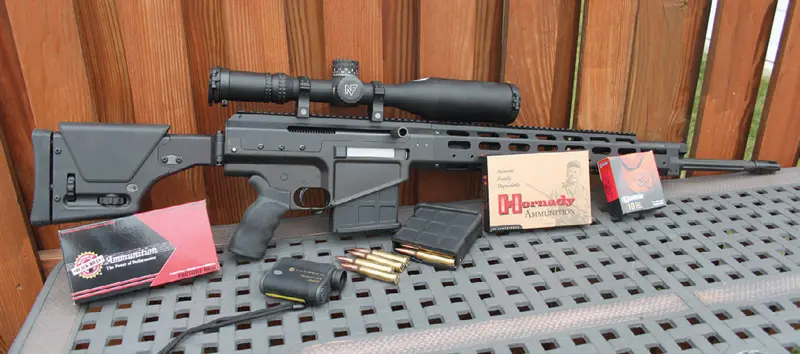
Difficulties with case development lead RAI to contact Lapua of Finland in 1984. RAI was forced to drop out of the program due to financial difficulties. Lapua, SAKO, and Accuracy International finished the development with a redesigned case more suitable to withstand the high pressures required to launch 250- or 300-grain bullets at nearly 3,000 feet-per-second (fps).
The .338 Lapua quickly established itself as the ideal military long-range anti-personnel cartridge, as it fills the gap between the 7.62mm NATO and .50 BMG. This statement is supported by the United States Special Operations Command’s (USSOCOM) solicitation for a new long-range Precision Sniper Rifle (PSR) centered on the .338 Lapua.
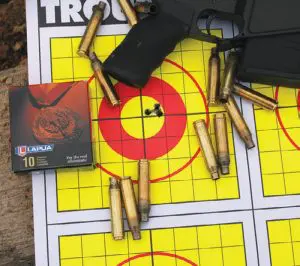
USSOCOM intention for the .338 Lapua rifle is to interdict enemy personnel, positions, and non-technical vehicles mounted with crew-served weapons out to 1,500 yards or farther, while also being capable of defeating NIJ Level III body armor out to 900 yards.
Questioning the standard approach is not always the easiest path to follow. Alexander Arms decided to up the ante with the .338 Lapua via the semiautomatic Ulfberht. Alexander Arms is known as an innovator with their .50 Beowulf and 6.5 Grendel chambered AR platforms. The Ulfberht semiauto continues along this path.
THE VIKING SWORD
The Ulfberht name follows Alexander Arms’ tendency to choose names derived from Norse legend and history for their products. Ulfberht is the name of a unique type of sword produced by the Vikings. The Ulfberht sword was made of steel that was uncommonly strong and durable for its time. The same analogy can be made in regard to the Ulfberht .338 Lapua rifle.
The Ulfberht will definitely not be labeled a compact rifle. The 27.5-inch 4140 steel barrel is button-rifled with a twist rate of 1:9.3. The barrel is fluted once it extends past the forend. Overall length of the rifle is 41.5 inches with a weight of 20 pounds.
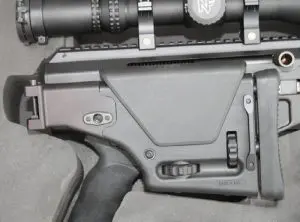
A side-folding Magpul PRS stock is attached to the receiver, allowing for an adjustable length of pull and cheek height. This stock is rock solid, with design characteristics making it conducive to long-range shooting from the prone position using either improvised shooting rests or a bipod. The ergonomics of the stock permit a comfortable, repeatable cheekweld.
Four detachable ten-round magazines arrive in the hard case with the Ulfberht. A 30 MOA offset Picatinny rail runs along the top of the receiver and blends in with the railed free-floated forend surrounding the barrel.
The forend is drilled and tapped on the sides and bottom for adding more rail sections if desired. An AR-style pistol grip and 4.5-pound trigger provide shooter interface with the Ulfberht.
The Alexander Arms Ulfberht .338 Lapua combines premium materials with simplicity of operation to not only harness .338 Lapua power, but also to provide superior accuracy while still providing semiautomatic benefits. The Ulfberht has only ten moving parts out of its 48 total components.
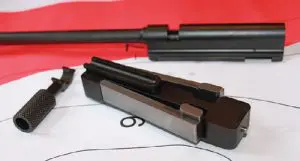
SOVIET INSPIRATION
Bill Alexander based the Ulfberht’s operating method on the Soviet/Russian DP-28 machine gun. The Ulfberht adapted the long-stroke gas piston of the DP-28 by inverting it to accommodate being magazine fed from the bottom. The gas system on the Ulfberht features five adjustment settings that handle manual operation, suppressor use, various load pressures that the .338 Lapua cartridge can have, as well as extreme temperatures in terms of cold and heat.
Conversations with Bill Alexander reinforced the importance of using the proper gas setting per ammunition used to ensure the smoothest operating of the Ulfberht’s action. The provided manual simply outlines which setting based on observed brass ejection pattern.
Being able to harness the .338 Lapua Magnum in a semiautomatic platform is not a simple undertaking. It requires both keen engineering and proper blending of materials to be used. There is a reason why semiautomatic .338 Lapuas have been confined to the custom realm until now.
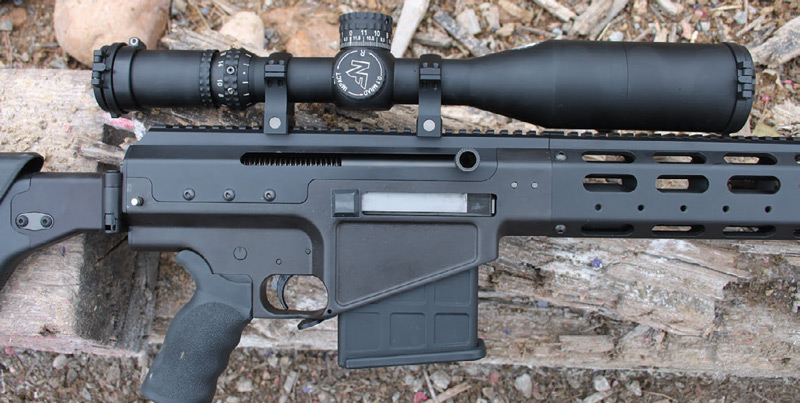
The receiver is machined out of high-grade 9310 steel, which contains vanadium, giving it a tight molecular structure that resists cracking—important when considering the pressures associated with the .338 Lapua and the jarring a semiautomatic action produces.
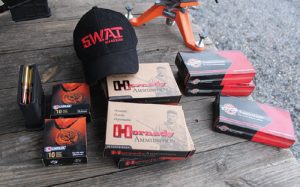
Along these same lines, the barrel is press fitted into the receiver, creating a breach that measures 1.75 inches in diameter. The action consists of a 16.5×0.5-inch operating rod that has a solid block of 17-4 stainless steel attached to it in the form of a bolt group.
The Ulfberht’s bolt has dual ejectors and an HK-style extractor. The bolt does not rotate when cycling; rather it is locked into the receiver by two oversized steel locking lugs that cam inward out of the way to unlock the action once pressures drop, permitting safe operation of the action. Alexander felt this was the best method to support the barrel, as well as to lock the bolt closed on the semiautomatic action.
This all contributes to safe, reliable functioning and tamed recoil. The bolt runs to the back of the receiver during recoil under constant dual-spring pressure wrapped around the operating rod. The distance traveled by the bolt is twice the distance of the .338 Lapua’s cartridge length. This provides for a smooth, non-jarring recoil pulse, assisting in accuracy and shooter endurance/recoil management when firing in target-rich environments.
The Ulfberht brings together individual high-quality components into one 25-pound package after adding an optic and loaded ten-round magazine. Suggested retail price is $5,800.
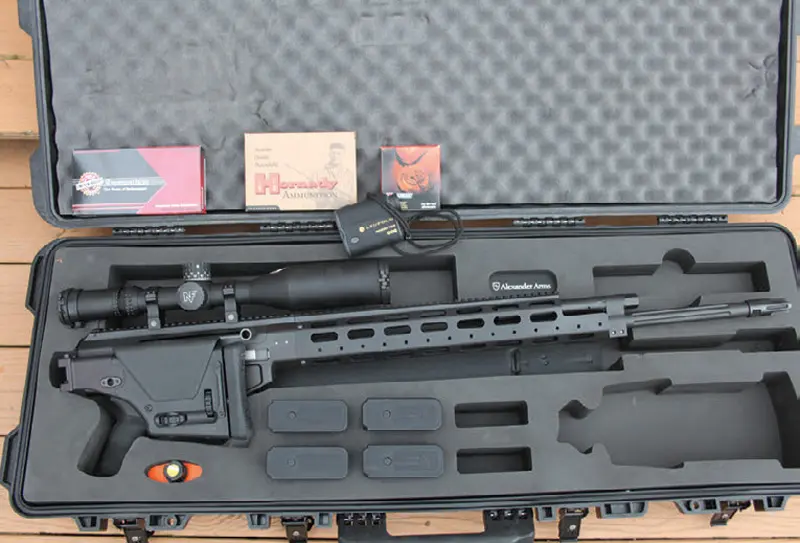
NIGHTFORCE OPTIC
A Nightforce ATACR 5-25x56mm (34m tube) was mounted on the Alexander Arms .338 Lapua via Nightforce rings. Nightforce is a noted high-end optic manufacturer with numerous products in use with elite military and police forces around the world.
The Nightforce ATACR can be fitted to the biggest magnum boomers due to constant 3.5-inch eye relief at all magnifications. The Nightforce’s tough construction is perfect for recoil resistance due to inertia forces experienced during recoil, especially with a cartridge like the .338 Lapua. The ATACR has 120 MOA of elevation adjustment and 60 MOA in windage. This all lends itself well to long-range shooting adjustments.
The Nightforce ATACR features multi-coated ED glass. Based on research for this article, ED (Extra Low Dispersion) glass prevents or lessens chromatic aberration because it concentrates and directs the wavelengths of light more effectively. Generally speaking, the better the aberrations are controlled, the cleaner and brighter the image will appear. This is especially important at long-range, high-magnification observation. ED glass is usually reserved for premium optics due to the cost associated with it.
Other notable characteristics of the Nightforce ATACR optic are second focal plane reticle, ZeroStop elevation adjustment, .25 MOA or .1 Mil adjustments, Hi-Speed elevation adjustment with windage knob capped, separate parallax adjustment with distance markings, digital reticle illumination, enhanced engraving, integrated power throw lever, and XtremeSpeed diopter adjustment. Many of these items are proprietary Nightforce features. The Nightforce ATACR is a good fit for the long-range .338 Lapua Ulfberht.

ON THE RANGE
A variety of .338 Lapua ammunition was tested with the Alexander Arms Ulfberht: Black Hills Ammunition 250- and 300-grain Sierra MatchKing, Lapua Lock Base 250-grain FMJBT, Scenar 250- and 300-grain HPBT, and 250- and 285-grain BTHP and 285-grain ELD Match Hornady ammunition.
The first requirement of a tactical rifle is precise, repeatable accuracy. The Ulfberht consistently produced MOA groups with the different .338 Lapua ammunition utilized— an important logistic consideration—while exhibiting a slight preference for the Black Hills and Lapua 300-grain loads. Hundred-yard performance with the Ulfberht was typified by one-inch or less groups. All the 300-yard groups measured below 2.75 inches, with the Black Hills 300-grain Match loads the best at two inches.
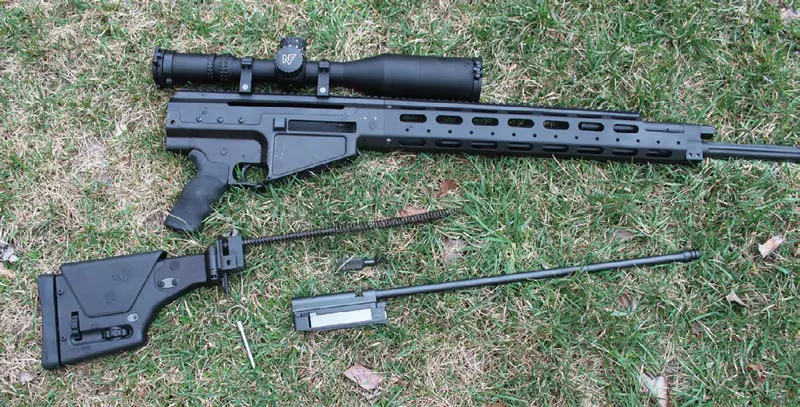
The .338 Lapua does not show its true potential relative to other cartridges until past the 600-yard line. The high ballistic coefficient bullets matched with the high launch speed keep the round supersonic past 1,500 yards.
The Ulfberht rifle did not spend a lot of time at the Echo Valley Training Center (EVTC) 100-yard range during this T&E, as 300 yards and farther are more indicative tests of a precision tactical rifle. EVTC is properly set up to handle extensive test firing of a precision tactical rifle like the Alexander Arms Ulfberht, with its 600-yard range and access to various off-site locations where up to 1,500 yards is available.
EVTC has fixed dug-in firing positions, which proved perfect for this evaluation. The shooter can remain standing while firing the Ulfberht from off the ground stabilized by front rest and rear sandbag. This proved easier for managing recoil compared to lying behind the rifle in a more traditional prone position.
While the Ulfberht’s muzzle blast is impressive, recoil is not excessive and can be characterized as the softest-shooting .338 Lapua I have experienced to date. It proved feasible to rapidly place multiple rounds on 500-yard steel. At times a round was still in the air when the previous shot made the steel target ring out with impact.
Another note of interest is how easy the ATACR Mil-R reticle made hitting targets at that distance. The benefit of holding directly on target with appropriate hash mark versus an estimated hold over is obvious. Also, the Mil-R reticle is a great tool for estimating range to a target. A favorite reactive target has always been the dastardly 4½-inch diameter clay pigeon. A 100-yard zero easily translated into holding the correct hash mark below the main horizontal wire directly on target, ensuring hits at 300 and 500 yards.
CONCLUSIONS
The .338 Lapua is clearly superior to both the .308 Win and .300 Win Mag for long-range personnel interdiction because of better ballistics and downrange power. In the same vein, the semiautomatic Ulfberht offers other advantages to the marksman who is using a bolt-action rifle.
That a powerful, accurate rifle like the Ulfberht is capable of fast followup shots from its ten-round magazine is invaluable. Yes, first-round hits are paramount, but do not underestimate the importance of fast follow-up shots after observing initial impact or if more targets are available.
A trained marksman will definitely be able to put to good use the ballistic advantages offered by the .338 Lapua cartridge. The Alexander Arms Ulfberht, with its precision long-range semiautomatic firepower, makes it that much easier.
